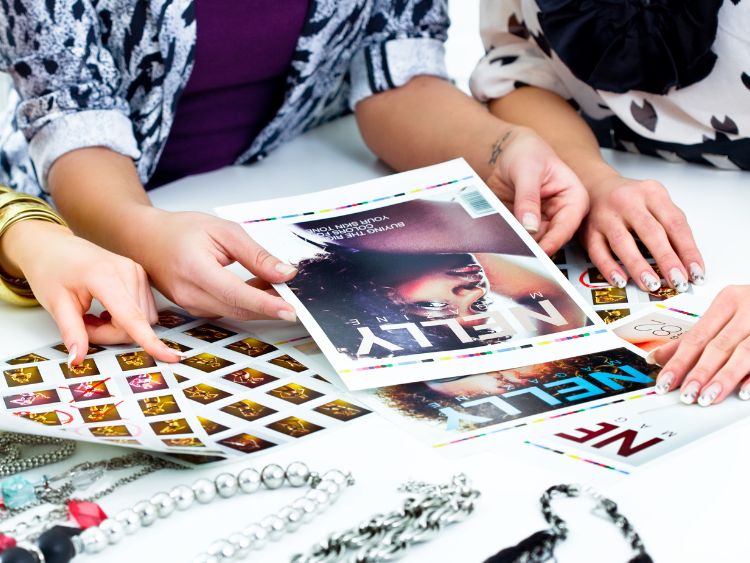Why Fashion Magazines Matter
Fashion magazines have been the go-to source for style inspiration and trend forecasting for decades. Whether you’re flipping through glossy pages or scrolling online, these publications offer a mix of glamour, creativity, and practical advice. They don’t just showcase the latest trends—they tell the stories behind the designs, the designers, and the cultural movements shaping our wardrobes.
So, why are fashion magazines still relevant in a world dominated by social media influencers and fashion blogs? Let’s dive in to explore their lasting appeal and evolving role in modern society.
The Evolution of Fashion Magazines
From the Printed Page to Digital Platforms
Fashion magazines have come a long way since their humble beginnings in the 19th century. Early publications like Harper’s Bazaar and Vogue focused on high society and seasonal trends. Back then, these magazines were luxurious indulgences for the elite.
Fast-forward to today, and you’ll find a seamless blend of traditional print editions and interactive digital content. Now, you can swipe through photo spreads, watch behind-the-scenes runway videos, and shop curated looks—all in one app!
Key Milestones in Fashion Magazines:
- 1867: Harper’s Bazaar debuts as one of the first major fashion magazines.
- 1892: Vogue launches, becoming an iconic name in fashion publishing.
- 1990s: The rise of supermodels makes fashion magazines even more aspirational.
- 2000s: Digital editions and websites revolutionize how readers engage with content.
Iconic Fashion Magazines You Need to Know
Fashion magazines vary in style and audience, catering to everyone from trendsetters to industry insiders. Here are a few that have defined the genre:
1. Vogue
Arguably the most iconic name in fashion publishing, Vogue sets the standard for trend forecasting and high-fashion storytelling. With editions across the globe, this magazine has been a cultural force since 1892.
2. Harper’s Bazaar
Known for its artistic layouts and timeless elegance, Harper’s Bazaar blends fashion with art and literature. It’s perfect for readers who appreciate high-end aesthetics.
3. Elle
Elle strikes a balance between aspirational and accessible, offering everything from couture to street style. Its focus on women’s empowerment makes it a standout in the industry.
4. GQ
While traditionally seen as a men’s magazine, GQ has carved out a niche in fashion by spotlighting the latest in men’s style, grooming, and culture.
5. Teen Vogue
This digital-first publication caters to younger audiences with a mix of fashion, beauty, and social issues. It’s a fresh take on what fashion magazines can be in the modern era.
How Fashion Magazines Shape Trends
Setting the Agenda for Designers and Consumers
Fashion magazines have always been more than just trend followers—they’re trendsetters. Designers often rely on these publications to gauge public interest in emerging styles. Editorials, cover shoots, and runway reviews all contribute to the zeitgeist of the season.
For consumers, fashion magazines offer a curated look at the industry, helping readers understand how to incorporate runway trends into everyday life.
How They Influence the Industry:
- Runway to Reality: Translating haute couture into wearable looks.
- Spotlighting Designers: Introducing up-and-coming talent to a global audience.
- Cultural Commentary: Exploring the intersection of fashion, politics, and culture.
Why People Still Love Fashion Magazines
A Tangible Experience
In a world dominated by screens, there’s something special about holding a glossy fashion magazine. The tactile experience of flipping through pages, the smell of fresh ink—it’s almost meditative.
Exclusive Content
Fashion magazines provide exclusive interviews, photo spreads, and editorials that you won’t find on Instagram or TikTok. They’re curated by experts who live and breathe fashion, ensuring high-quality content.
Inspiration and Escapism
Let’s face it—life can be stressful. Fashion magazines offer an escape into a world of beauty and creativity. Whether you’re daydreaming about a designer gown or learning how to style your favorite jeans, these publications ignite the imagination.
The Digital Transformation of Fashion Magazines
Bridging Print and Online Audiences
Most major fashion magazines now have robust online platforms. Websites, apps, and social media channels allow them to reach wider audiences while maintaining the prestige of their print editions.
Benefits of Going Digital:
- Instant access to breaking fashion news.
- Interactive features like shopping links and videos.
- Sustainability by reducing paper waste.
Tips for Choosing the Right Fashion Magazine
With so many options, picking the right fashion magazine can feel overwhelming. Here are a few tips to help:
- Know Your Style: Are you into high fashion, streetwear, or a mix? Choose a magazine that aligns with your interests.
- Check the Content: Look for magazines that offer a balance of trends, interviews, and practical advice.
- Consider the Audience: Some magazines cater to niche markets, while others have broader appeal.
FAQs About Fashion Magazines
- Why are fashion magazines still relevant in the digital age?
Fashion magazines offer curated, high-quality content that’s often missing from fast-paced social media platforms. They provide in-depth analysis, exclusive interviews, and timeless inspiration. - Which fashion magazine is the most influential?
Vogue is widely considered the most influential fashion magazine, with its global reach and cultural impact. - How do fashion magazines make money?
They generate revenue through advertising, subscription sales, and partnerships with brands. Digital editions often include e-commerce features for added income. - Can anyone contribute to a fashion magazine?
Many magazines accept freelance contributions, especially for niche topics. However, breaking into the industry often requires a strong portfolio and industry connections. - What’s the future of fashion magazines?
The future lies in blending traditional storytelling with innovative digital features. Sustainability and inclusivity will also play a significant role in shaping their evolution.
Conclusion: The Timeless Appeal of Fashion Magazines
Fashion magazines have stood the test of time by evolving with their audiences. From their beginnings as elite publications to their current role as cultural touchstones, these magazines continue to inspire, educate, and entertain. Whether you’re flipping through pages or scrolling online, one thing’s for sure: fashion magazines will always have a place in the world of style.
Authoritative Links:
- Vogue – https://www.vogue.com
- Harper’s Bazaar – https://www.harpersbazaar.com
- Elle – https://www.elle.com
- GQ – https://www.gq.com
- Teen Vogue – https://www.teenvogue.com






